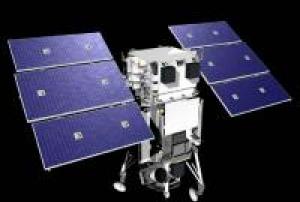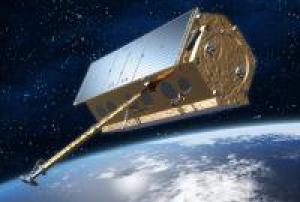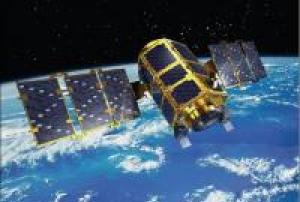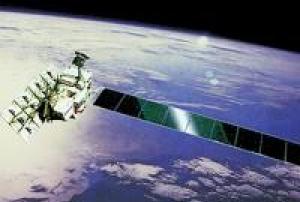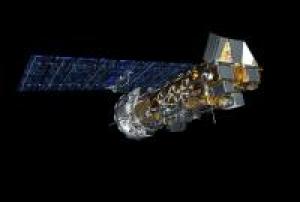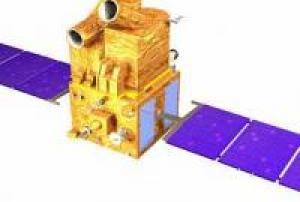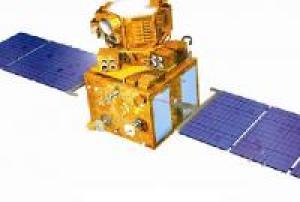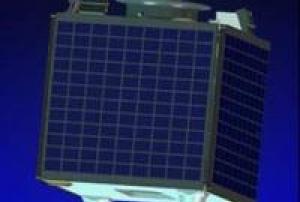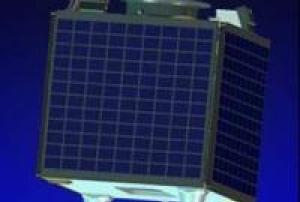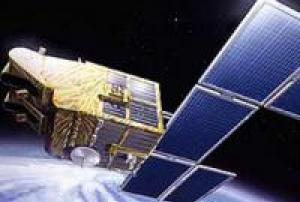Volcanic Eruption
Definition
Facts and figures
Further information
UN-SPIDER Regional Support Offices with hazard-specific expertise
Related content on the Knowledge Portal
The WorldView-1 offers a high-capacity, panchromatic imaging system which features 0.46m resolution imagery.
Operating at an altitude of 496 kilometers, WorldView-1 satellite has an average revisit time of 1.7 days and is capable of collecting up to 750,000 square kilometers (290,000 square miles) per day of half-meter imagery. The satellite is also equipped with state-of-the-art geo-location capabilities and exhibits stunning agility with rapid targeting and efficient in-track stereo collection.
WorldView-1 satellite sensor was successfully launched from Vandenberg Air Force Base, California, U.S.A., at 11:35 Hrs Pacific Daylight Time (PDT) on September 18th, 2007.
Instrument: WV60 (WorldView-60 camera)
read more
- spectral range 0.45 - 0.90 µm
- swath width: 17.6km at nadir
- pushbroom imager18/09/2007TerraSAR-X is a German Earth-observation satellite. Its primary payload is an X-band radar sensor with a range of different modes of operation, allowing it to record images with different swath widths, resolutions and polarisations. TerraSAR-X thus offers space-based observation capabilities that were previously unavailable. The objective of the mission is to provide value-added SAR (Synthetic Aperture Radar) data in the X-band, for research and development purposes as well as scientific and commercial applications.
The successful launch of TerraSAR-X on 15 June 2007 at 08:14 local time from the Russian Baikonur Cosmodrome in Kazakhstan marked the start of a campaign to map the Earth at an unprecedented level of accuracy. The aim is to create new, high-quality radar images of the Earth’s surface.Instrument: SAR (Synthetic Aperture Radar)
read more
- the sensor operates in the X-band and in 3 different modes (Spotlight, Stripmap, ScanSAR)15/06/2007KOMPSAT-2 (Korea Multi-Purpose Satellite-2), also referred to as Arirang-2 by South Korea, has been developed by KARI (Korea Aerospace Research Institute) to continue the observation program of the KOMPSAT-1 mission.
The main mission objectives of the KOMPSAT-2 system are to provide a surveillance of large scale disasters and its countermeasure, acquisition of independent high resolution images for GIS (Geographic Information Systems), composition of printed maps and digitized maps for domestic and overseas territories, balanced development of Korean territories, survey of natural resources, and continuation of satellite earth observation after KOMPSAT-1.
Instrument: MSC (Multispectral Camera)
- resolution: 1m panchromatic, 4m multispectral
- swath width: approx. 15km
read more28/07/2006ALOS (Advanced Land Observation Satellite) has been decommissioned. ALOS was successfully launched on January 24, 2006 from the Tanegashima Space Center.
ALOS was one of the world's largest earth observation satellites whose function is to collect global and high resolution land observation data. ALOS data was made available at conditions similar to those of ERS and Envisat missions, namely for scientific 'Category-1' use as well as commercial applications.
The ALOS (renamed "Daichi") satellite sensor had three remote-sensing instruments: the Panchromatic Remote-sensing Instrument for Stereo Mapping (PRISM) and for digital elevation models (DEMs). The Advanced Visible and Near Infrared Radiometer type 2 (AVNIR-2) for precise land coverage observation, and the Phased Array type L-band Synthetic Aperture Radar (PALSAR) for day-and-night and all-weather land observation and enabled…
read more24/01/2006NOAA-18, known before launch as NOAA-N, is a weather forecasting satellite run by NOAA. NOAA-N (18) was launched on May 20, 2005, into a sun-synchronous orbit at an altitude of 854 km above the Earth, with an orbital period of 102 minutes. It hosts the AMSU-A, MHS, AVHRR, Space Environment Monitor SEM/2 instrument and High Resolution Infrared Radiation Sounder (HIRS) instruments, as well as the SBUV/2 ozone-monitoring instrument. It is the first NOAA POES satellite to use MHS in place of AMSU-B.
APT transmission frequency is 137.9125 MHz (NOAA-18 changed frequencies with NOAA-19 on June 23, 2009).
Instruments:
read more
AMSU-A (Advanced Microwave Sounding Unit - A)
AVHRR/3 (Advanced Very High Resolution Radiometer /…20/05/2005Cartosat-1 satellite sensor was built by ISRO (Indian Space Research Organization) which is mainly intended for cartographic applications was launched by the PSLV on May 5, 2005 at Sriharikota, India.
Prior to launch, ISRO renamed the IRS-P5 spacecraft to CartoSat-1, to describe more aptly the application spectrum of its observation data. In this mission, the high resolution of the data (2.5 m GSD) is being traded at the expense of multispectral capability and smaller area coverage, with a swath width of 30 km. The data products are intended to be used in DTM (Digital Terrain Model)/DEM (Digital Elevation Model) generation in such applications as cadastral mapping and updating, land use as well as other GIS applications.Instrument: PAN (Panchromatic Camera)
- high resolution optical imager
- max swath: 30km05/05/2005IRS-P6 is an Earth observation mission within the IRS (Indian Remote-Sensing Satellite) series of ISRO (Indian Space Research Organization), Bangalore, India. The overall objectives of the IRS-P6 mission (ResourceSat-1) are to provide continued remote sensing data services on an operational basis for integrated land and water resources management. IRS-P6 is the continuation of the IRS-1C/1D missions with considerably enhanced capabilities.
Prior to launch, ISRO renamed the IRS-P6 spacecraft to ResourceSat-1, to describe more aptly the application spectrum of its observation data.
Instruments:
LISS-4 (Linear Imaging Self-Scanning Sensor-4)
LISS-3 (Linear Imaging Self-Scanning Sensor-3)
AWiFS (Advanced Wide Field Sensor)17/10/2003On 26 September 2003 Nigeria launched its $13 million national satellite NigeriaSat-1 in Plesetsk, Russia under a seven-nation constellation being handled by a Russian firm, Cosmos. Nigeriasat-1 is a low earth orbit micro satellite for disaster monitoring looking spacecraft, 5-year target design life-span orbit 700km. The launching of the National Satellite, which started development in November 2001, had been postponed from July 2003 because the Russian Space Agency had to launch a military satellite during that period. NigeriaSat-1 is one of five satellites which will make up a network called the Disaster Monitoring Constellation. The other partners in the international consortium are UK, China, Algeria, Turkey, Thailand and Vietnam. Each satellite belongs to one country, but they will share information with each other when disaster monitoring is needed. The Disaster Monitoring Constellation satellites, which cost less than $10 million each, are built by a British-based company,…
read more27/09/2003BNSCSat (British National Space Centre Satellite) or UK-DMC 1 is the UK component of DMC. The Disaster Monitoring Constellation (DMC) is an international programme initially proposed in 1996 and led by SSTL (Surrey Satellite Technology Ltd) from the United Kingdom, to construct a network of five affordable Low Earth Orbit (LEO) microsatellites. The objective is to provide a daily global imaging capability at medium resolution (30-40 m), in 3-4 spectral bands, for rapid-response disaster monitoring and mitigation. The Disaster Monitoring Constellation (DMC) is a novel international co-operation in space, led by SSTL bringing together organisations from seven countries: Algeria, China, Nigeria, Thailand, Turkey, the United Kingdom and Vietnam. The DMC Consortium is forming the first-ever microsatellite constellation bringing remarkable Earth observation capabilities both nationally to the individual satellite owners, and internationally to benefit world-wide humanitarian aid…
read more27/09/2003The satellites SPOT 5 (Satellite Probatoire de l'Observation de la Terre) was a third generation of SPOT earth observation satellite operated by Spot Image.
SPOT 5 used the improved SPOT Mk.3 bus design.
The prime imaging instrument was HRG (High Resolution Geometric), which was built by Astrium SAS of Vélizy, France to continue to improve the HRVIR service of SPOT-4. Two HRG instruments are provided in the conventional SPOT-series double-observation configuration, each with a FOV of 4.13º and the same cross-track pointing capabilities of ±27 º as the HRVIR imager on SPOT-4. The observation coverage of each HRG is 60 km in the nadir direction and >80 km in the oblique configuration.
SPOT-5 carries also the HRS (High Resolution Stereoscopic) instrument, which was developed and built by EADS Astrium SAS, sponsored by CNES and SPOT IMAGE. The objective of this instrument is to provide large-area along-track stereoscopic panchromatic imagery…
read more04/05/2002

